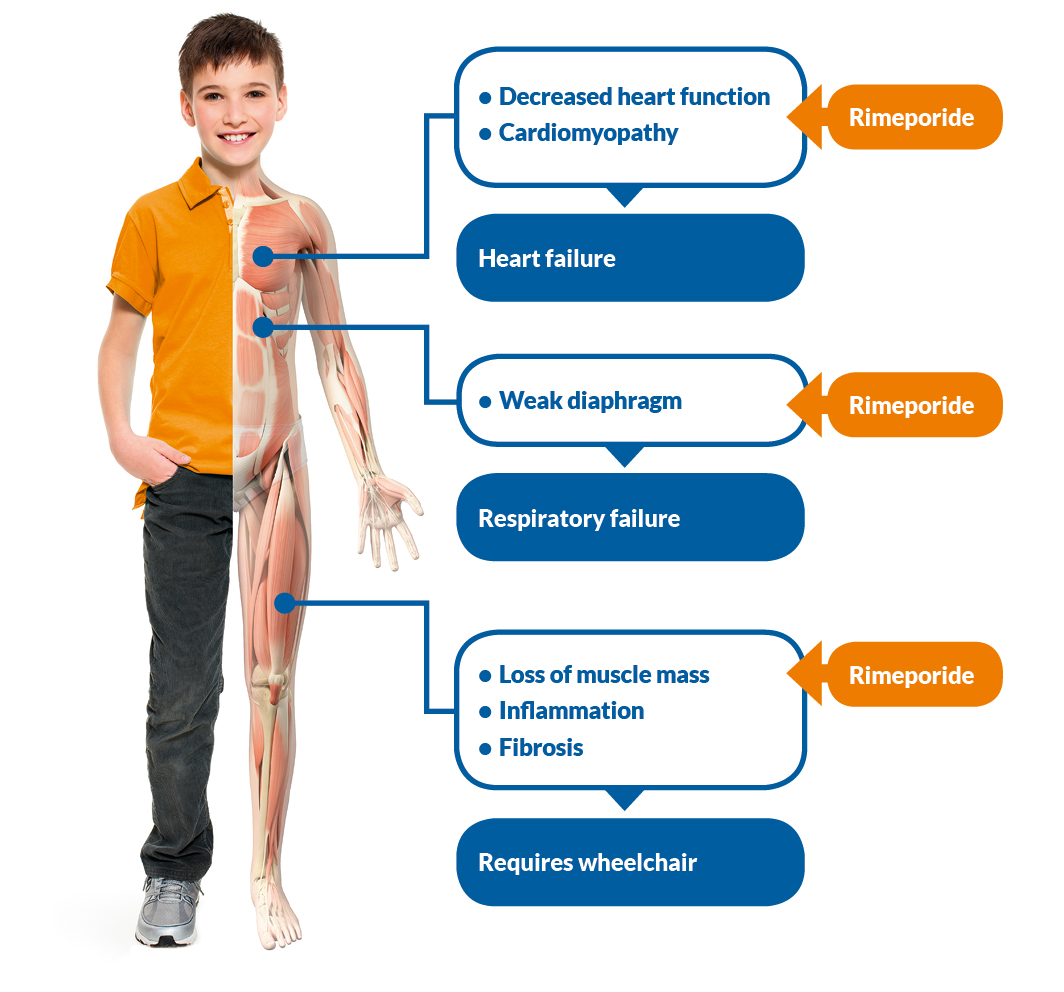About Duchenne Muscular Dystrophy
Duchenne Muscular Dystrophy (DMD) is a severe and life-threatening genetic paediatric disease that affects 1 in 3,500 boys worldwide.
Patients affected by DMD have progressive loss of muscle function and weakness in their early childhood. This progressive muscle wasting typically leads to loss of ambulation around 10 years of age. It eventually spreads to the arms, neck and other areas. Later in the twenties, this progresses to complete paralysis and increasing difficulty in breathing due to respiratory muscle dysfunction requiring ventilator support as well as cardiac muscle dysfunction leading to heart failure. Cardiac dysfunction is present in most DMD patients and it is the primary cause of premature death.
There is no treatment available that directly halts progression of the cardiac decline in these boys and available treatment mainly aims to manage the symptoms of the disease.

The disease is caused by an alteration (mutation) in a gene, called the DMD gene. The gene is located on the X chromosome, thus boys only are affected: as they have only one X chromosome, they don’t have a good copy of the gene to compensate the DMD mutation. The mutation can be inherited from the mother (who has no symptoms), or happen spontaneously without any family history in about one third of the cases.
Today, there is unfortunately no cure for this disease. The use of corticosteroid is the main pharmacological intervention, but it has limited efficacy and induces severe side effects such as increased risks for diabetes, fractures, fluid accumulation and respiratory infections upon chronic use. While additional therapies and treatments exist to alleviate symptoms, they do not alter the ultimate outcome of the disease. There is still a critical need for new therapies to halt the progression of the disease and in particular the life-threatening cardiomyopathy for all Duchenne boys.

